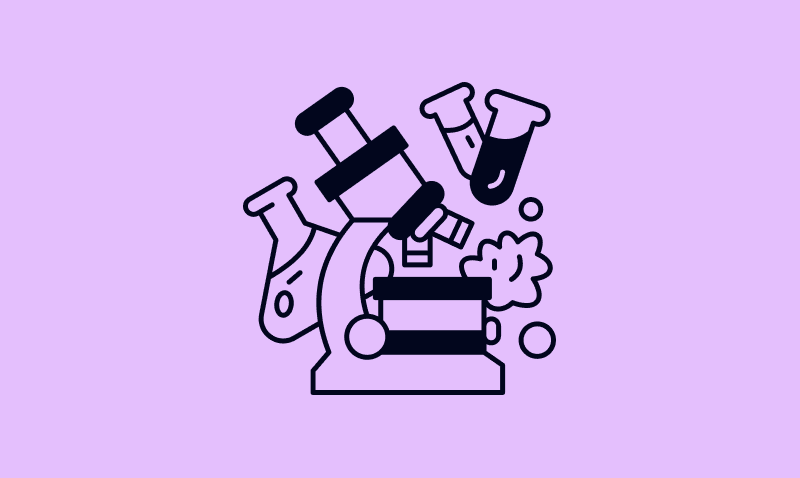After my interview with Caitlin Ferguson I noted.. I think she just solved a problem I didn’t know I had.”
Caitlin told me something in our conversation that I can’t stop thinking about.
She used to make a decision and then spend hours replaying it in her mind. Did she miss something critical? What if she was wrong? Should she have chosen differently?
High-stakes decisions felt paralyzing. Not because she couldn’t make them, but because she couldn’t stop second-guessing them afterward.
So she built a system to break the cycle. She calls it decision journaling.
The format is dead simple: I’m making this decision. Here’s the context that went into it. Here’s the outcome I think will happen based on what I know today. Then close the notebook and don’t look at it again until the thing actually happens.
Inevitably, some decisions revealed blind spots. But most of the time, she realized her instincts matched outcomes. She could trust her foresight in these circumstances. She needed to grow in these other areas.
That confidence compounds. Because so much of being a founder is making decisions on limited information, on the fly.
After working with over 100 founders and helping them generate more than $20 million in value, Caitlin has learned this: building a business doesn’t have to mean constant anxiety about whether you made the right call. You just need better systems for learning from the calls you make.
I’m stealing this framework immediately. Here’s everything else I learned from her.
The mistakes founders keep making
Two patterns show up constantly across the founders Caitlin works with.
Getting stuck at the whiteboard
Founders want to ideate their way out of problems. They’ll make it perfect in their minds, architect the flawless system, map every edge case. It feels safe. It’s thrilling to imagine the future.
Caitlin put it this way: no battle plan survives first contact with the enemy.
She’s had to physically kick founders away from whiteboards and force them to go have real conversations, beta test, try things and see what they learn. She can’t think of a single time where the idea perfected at the whiteboard matched what actually gained traction. It’s only through iteration that you find what works.
Not letting go
Once you hit three, four, five people on your team, you face a new challenge. You know you need to delegate, but you can’t quite release control. If you did it yourself, it would be done right.
But “right” isn’t the goal. Growth is.
Caitlin was firm on this: if you don’t learn to zoom out and let other people own things, you won’t scale. You’ll have an expensive hobby that burns you out. She’s seen it too many times.
How to actually delegate (without losing your mind)
Wait, this is the interesting part.
Caitlin introduced me to situational leadership. It’s a well-established framework, not something she invented, but it’s one she uses constantly with founders.
Situational leadership maps out how to progressively move someone from “I’m sitting next to you walking through every step” to “you fully own this, I’m hands off, I trust you completely.”
It gives you a checklist for recognizing when someone is ready for the next level of autonomy. Or when they need more support and you need to plan for that. Most founders either hold on too tight or throw people in the deep end with no scaffolding. This framework shows you the middle path.
Yes, they’ll make mistakes. It won’t be perfect. But mathematically, even if someone can only do something 80% as well as you, if you have another full-time person doing that work, you get your time back. Your spouse will thank you. Your health will improve. Your business will actually grow.
You didn’t start a company to be handcuffed to tasks you hate. Situational leadership helps you let go without losing quality.
The AI problem no one is solving
Founders know AI is important. Most have tried ChatGPT. But they’re stuck on how to make it operationally useful without a technical team or expensive software.
Caitlin felt the same frustration. She’d prompt AI, get an output, and think, “Great, but no.” Then she’d give it more context. And more. She was basically just coaching herself through writer’s block.
So she created what she calls a keystone document. It’s a single framework that teaches AI how to collaborate within your specific context. Platform-agnostic. No development needed. You update it once, and it works everywhere.
It has three parts:
Your values and quality standards. What has to be true for work to feel done? For Caitlin, it’s generosity—making people feel seen and exceptional. When AI knows your values, outputs align with how you actually operate.
Your problem-solving frameworks. You have mental models for decisions. Write them down. If you assess clients, document that matrix. If you evaluate projects, capture those criteria. AI can apply these frameworks consistently once you teach them.
Examples of prior successful work. When you tackle something new, you’re often unconsciously pulling from similar past situations. Give AI the same reference library.
With her keystone document, Caitlin can take a recording of a sales call, feed it into an LLM, and get a client-fit assessment, relevant service recommendations, and a draft proposal using the prospect’s own language—all in 5 to 10 minutes.
No technical lift. No steep learning curve. Just a framework that makes AI actually useful.
One founder told her they wished they’d had this when onboarding people, because it captures all the unwritten knowledge they carry around. It’s valuable beyond AI.
Why sales gets easier when you reframe it
A lot of founders hate sales. It feels icky, transactional, self-promotional.
Caitlin used to feel that way about thought leadership too. Posting on LinkedIn felt like standing on a chair in a restaurant and shouting opinions at strangers.
Then a mentor asked her: “Do you genuinely believe you can help people with what you know?”
She said yes.
The mentor said, “Then why are you uncomfortable sharing that knowledge to possibly help someone get unblocked?”
Caitlin told me she doesn’t know why it took that exact phrasing to unlock something in her, but it did.
Sales feels icky when you center it on the transaction. If you come at it as a problem-solver—you’re struggling with X, I know how to make that go away—it stops feeling like self-promotion. You’re just helping.
If you genuinely believe in the value you provide, sharing that isn’t showing off. It’s useful. People need what you know.
And if you’re intimidated by sales as a skill, lean in. It’s learnable. What’s the worst that happens from trying?
This is the golden age (if you can see it)
This year has been rough for founders. Markets are chaotic. AI is disrupting everything. So many people asking, “Should I just go get a job?”
Caitlin’s perspective surprised me.
She thinks this is the golden age for founders who can move fast.
Yes, AI is disruptive. But disruption creates opportunity. When the internet emerged, everyone predicted job loss and industry collapse. Instead, we got net new jobs from problems the internet created that didn’t exist before.
AI will do the same. Founders who figure out unique ways to integrate AI into their businesses, or who become experts in the new challenges AI creates, are first-movers in a massive wave.
So if you’re on the fence: don’t give up. Shift your lens. Find the opportunities in the chaos.
And find your people. Communities like Generalist World exist because building alone is brutal. When you’re around others who get it, you stop feeling insane. You see new possibilities. You get unstuck faster.
That’s the real advantage in uncertain times: the people who can help you see around corners.
This essay is adapted from my conversation with Caitlin Ferguson on the Generalist World podcast. [Listen to the full episode here.] Caitlin does embedded operations for founders, helping them optimize people, process, and profitability. Find her at coopilots.io or on LinkedIn. She’s also part of the Generalist World community.



